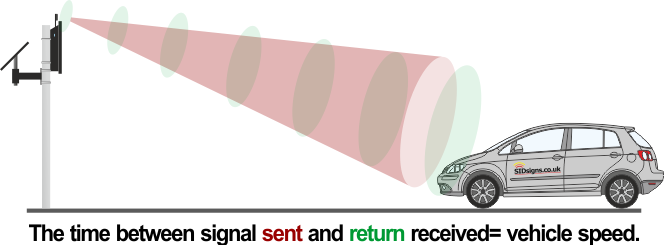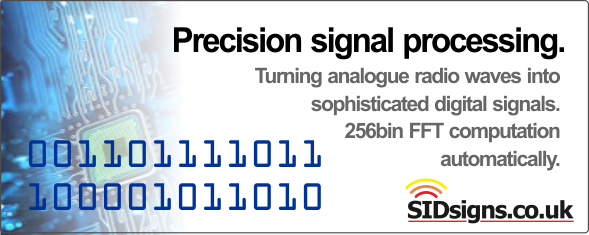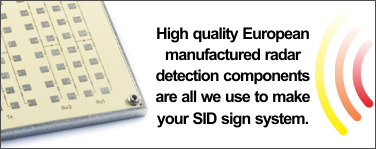Main menu
SID product menu
Use this list to explore the product range.
How SID signs work
Clever on-board detection & processing.
Sid signs use sophisticated on-board radar transceivers to detect & calculate the presence and speed of an approaching vehicle. Although this sounds very "high tech" it uses principles that were first developed in the 1930's.

The detection part of your sid sign is carried out by the transceiver; this sends out radio waves and then waits, listening for their return (transmit). If the radio waves hit an oncoming vehicle they bounce back they are picked up (received). That's why is a transceiver; it both sends and receives information. This basic process is what we call shout & listen; the detector shouts out a signal and then listens to see if it's bounced back.
When there is no response to the "shout" this means the transmitted signal has nothing in it's path, there is no vehicle in range, there are no return signals coming back to the sign.
If a vehicle is present in front of the sign the "shout" sent by the sign radar is bounced back as an echo, the echo is what your SID sign is waiting for. Once it's seen an echo this is when the processing power of the SID sign takes over.
Analogue to digital.
Up until now we have been dealing with radio waves; analogue signals which are travelling through the atmosphere. What we need to do now is switch on a fixed speed display or show a vehicles speed in led lighting format.
So how do we do this? How can we convert radio waves into useful data which can be displayed on our sign?

Digital signal processing (DSP), sophisticated computing techniques take the raw radio waves received by the transciever and turn them into the accurate speed and distance information. Certain parameters must be set into the DSP device, things like immunity settings, averaging cycles, gain factors. These things all help to refine and tune the accuracy of the conversion process.
If all this sounds complicated then don't worry, it's all handled automatically by your SID sign using our new software based command and control system. Automated testing routines ensure that the DSP is working correctly before any sign is shipped to customers.
Quality components.
The radar transceiver & signal processing systems embedded in your sign are the most critical components; get these wrong and you'll soon notice. To ensure you get the best these important devices are sourced from premium European manufacturers; manufacturers with a reputation for precision & accuracy.
Working closely with our detection partners we are able to offer a higher level of technical understanding and system know-how; this allows us to give you one of the best detection & processing systems on the market with the knowledge required to get the most out of it.
